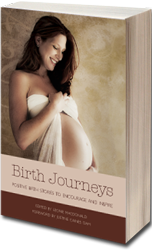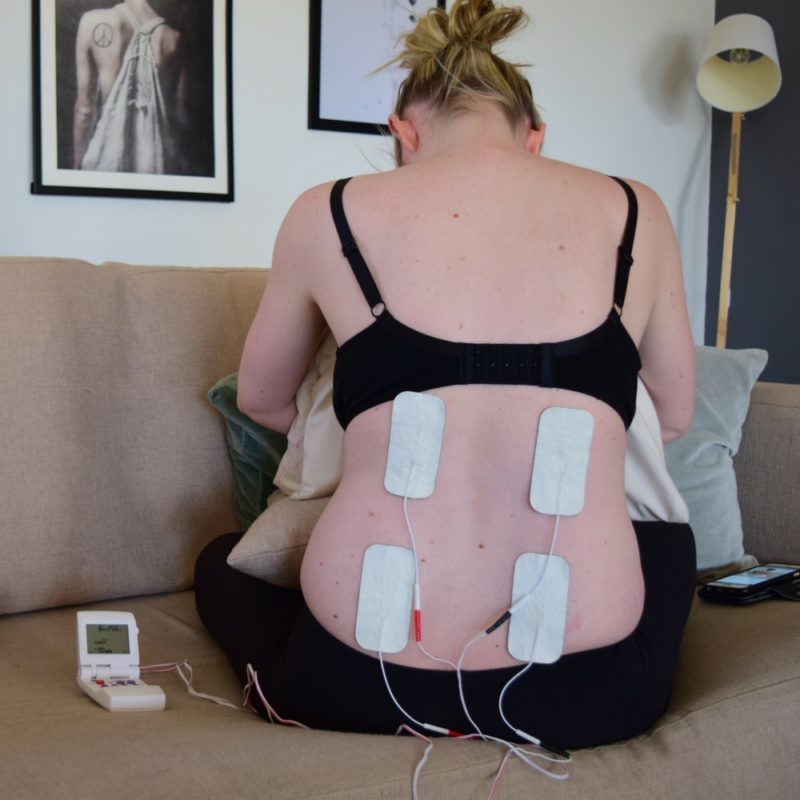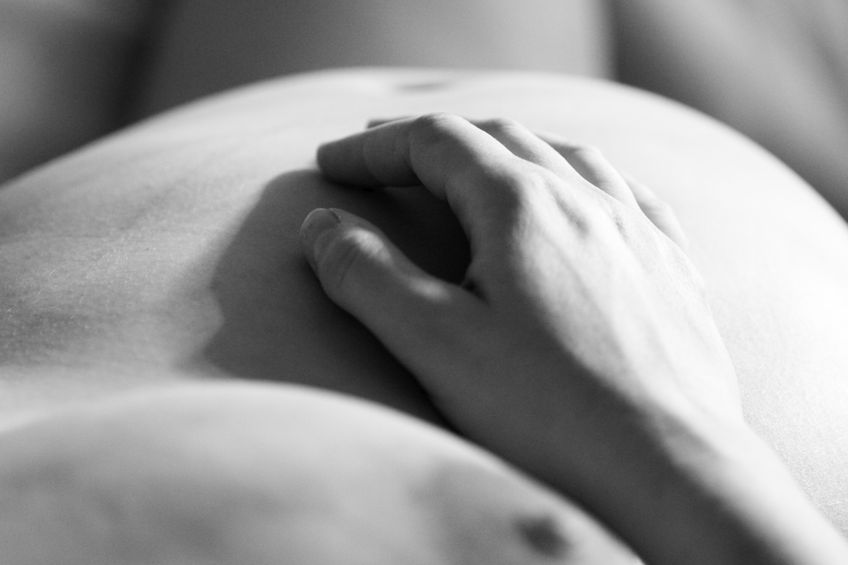Your experience of birth matters and you do deserve a positive experience. Emerging from birth feeling emotionally healthy and whole will give you a great beginning to motherhood. This is one of Sweet Beats’ most popular articles, and we hope it is helpful for you as you prepare to give birth.
9 Tips That Will Help You Prepare For A Positive Labour & Birth
The physical process of labour works best when we are able to trust and let go of our inhibitions and conscious thoughts. When we feel supported and safe, respected and cared for it is easier for us to do this. So trust in birth, trust in your own body, and trust in the people looking after you are very important. The preparation you do and the choices you make are critical to the actual outcome of your labour and how you feel during and after birth. You may hear that all that matters is a healthy baby. Naturally this is every mother’s priority but it does not mean there is no benefit in preparing for a healthy and positive birth. A healthy and positive birth is good for both mother and baby.
1. Options, Choices, Possibilities
Find the carers and the place of birth that share your views on the kind of birth you want and will be able to support you and meet your needs. Regardless of you birth preferences or the way your birth unfolds, choosing the right people for you will help you through any outcomes. You need to have carers who can make you feel safe, cared for, understood and respected. There are often more choices for maternity care than you might hear about from friends or colleagues so keep an open mind to different possibilities and ask plenty of questions.
If you are uncomfortable with your carer or the birth environment, consider making a change or doing what you can to cushion yourself from the impact these have on you. If you are unable to find the best carer for your pregnancy and birth, surround yourself with a good support team so that your needs for safety, trust and nurturing during birth are still met. Focus on having clear and positive communication with your carer.
Consider having a doula to support yourself and your partner. A doula can help you to understand and navigate the medical world and offer you support and suggestions throughout labour. While a midwife or doctor will rarely be by your side through the entire labour, a doula can stay with you. They may also provide postnatal support to help you learn how to care for your newborn.
2. Relax
Yoga, hypnobirthing and meditation do work! They may help you relax, get a good night’s sleep and manage the emotional and physical changes of pregnancy. They are wonderful techniques in labour and some women will experience a pain-free natural birth through relaxation and meditation. However, to get the greatest benefit you need to do the emotional and mental work that goes along with relaxation skills. There are a number of relaxation, meditation and hypnosis programs that will teach you and your partner these skills. You’ll also find these relaxation skills helpful after birth as a mother!
3. Understand Birth
There is more to birth than the stages of labour, contractions, timing and dilation. Learn about both the hormonal nature of labour and the way the muscles of your uterus work. Learn how these interact with your feelings during labour and how fear and anxiety may affect the progress of your labour. Work towards trusting that labour works and that the sensations of labour are the result of your body working beautifully.
Learn about the benefits of remaining active in labour and some of the positions that will help you to manage the contractions and aid you body in its work. Sitting on a birth ball during pregnancy is a comfortable way to strengthen your thighs and keep your pelvis open and tilted forwards making space for your baby and encouraging your baby into a good position for birth. In labour, swivelling or bouncing on a birth ball is beneficial in coping with pain, keeping the weight and pressure off your pelvis and helping your baby to move into the optimal position for birth. You can also sit or kneel and lean forwards, resting your arms and head on the birth ball – a comfortable position for many women during labour. Using a birth ball encourages you to move in a natural, repetitive and rhythmic way, helping your body and mind to relax and to work with labour.
4. Reflect and Reconsider
Become aware of the beliefs you hold about what birth is like and about your own ability to give birth. Spend a little time writing down your images of birth. Consider where these have come from and how they serve you. Maybe they come from family stories, your friends’ experiences, soapies or movies you have seen, or TV documentaries. If you don’t like what you find and how it makes you feel about your baby’s birth, you have the ability to do something about it. There is more than one way to think about birth.
5. Get Balanced Information
In antenatal classes, you will learn about the stages of labour, common methods of assisting labour (eg, induction and breaking the waters) and the types of pharmaceutical pain relief available to you during labour (mainly gas, pethidine and the epidural). Find out the whole story: how does each of these interact with your body, your baby and the biological process of labour? How will it affect your ability to be active in labour? What are the risks to your baby, yourself and the progress of your labour? Is there a particular circumstance or time when it will be most beneficial? And under what circumstances is it the best course of action?
There are other options for pain relief that support a drug-free and active birth. Think about options that will interrupt pain messages on their way up to your brain and methods that you would use to relax and soothe tired and aching muscles. Immersion in a large warm water bath (preferably big enough to move around in and to cover your belly) provides many women with significant pain relief and can be safely used in most labours. Find out if your chosen place of birth will support a water labour and water birth. Many women also find heat packs, hot showers, massage and pressure on their lower back helpful. The TENS machine works by providing a tingling sensation applied to your lower back, interrupting the pain messages on their way to your brain. Instead of focusing on pain, your brain focuses on the sensations. If it is your preference to keep birth as natural as possible, it makes sense to add these options to your ‘bag of tricks’.
6. Protect Yourself from Fear and Negativity
Fill your mind with realistic and positive stories, words and images. Do what you can to explore and lay to rest your fears and anxieties. Don’t listen to stories, people or TV shows that sensationalise birth and play up the risks with the intention of frightening you or showing you that every birth is like that (it’s not true!).
Positive stories of all kinds of births, not just ‘perfect’ or ideal births, will show you what the experience of labour may be like. They will also show you that no two births are the same and it is best not to have rigid expectations of how labour should be. Positive stories will show you how other women have prepared for and experienced powerful and beautiful births. These stories will leave you feeling positive, confident and uplifted.
7. Find a Community of Support
Look for a group of supportive people who share your positive view of birth and mothering so that you do not feel isolated and alone. It is all too easy to feel surrounded by people who tell frightening stories of birth and do not support or respect the needs of pregnant women to feel safe. You may find supportive women online or face to face as you attend classes or groups in your pregnancy and birth journey.
8. Listen and Communicate
Listen to your inner self and also to your trusted carers. Be open and honest with the health professionals you have chosen to care for you in pregnancy and birth. Be open and honest with yourself too. If something doesn’t feel right or you have concerns about your health, your baby or a decision related to your care, then seek the answers you need. Don’t be afraid to ask for a longer appointment or make an extra appointment, or arrange to meet with staff at your chosen place of birth. When you become a mother you will find yourself advocating for your baby and child so now is a good time to begin!
9. Focus on the Positives
The most likely outcome of your pregnancy is a healthy and beautiful baby in your arms. The risks are there, but they are far lower than most of us perceive them to be. Rather than focus on the fear of possible complications, it may be more helpful to consider how you would like to be cared for in these circumstances. Focus on ensuring that you will feel well supported and respected, and that your bonding with your baby will be given a high priority. For example, practices you may associate with a natural vaginal birth are still achievable in many caesarean births. However, in many hospitals these are not the standard care so you will need to explain what you would like (eg, delayed cord clamping, immediate skin to skin contact with your baby on your chest, examining baby, and even resuscitating baby, on mother’s chest, delayed weighing and measuring, letting mother and father find out the baby’s sex). These seemingly small things can make an enormous difference to a mother’s wellbeing and how she comes to term with a birth that does not go to plan.
A perfect birth is not always achievable, but whatever your preferences, a birth where you feel well supported and nurtured is possible. Preparing for birth is a wonderful opportunity for you to learn and grow as a woman and mother – embrace it! 
Birth Journeys – positive birth stories to encourage and inspire contains 29 positive birth stories from every day Australian women (and men) and 15 contributions from doctors, midwives, doulas and authors to encourage, inspire and motivate you as you prepare for a positive birth.
Leonie MacDonald, mother of 2, is the editor of Birth Journeys – positive birth stories to encourage and inspire (www.birthjourneys.com.au) Available as a print book RRP $29.95 and ebook: $14.95
do you want to use tens in labour?More info..

Sweet Beats provides a hire out service for mums wanting to use TENS as pain relief in labour. Book a 5 week hire right here online on the next page.

